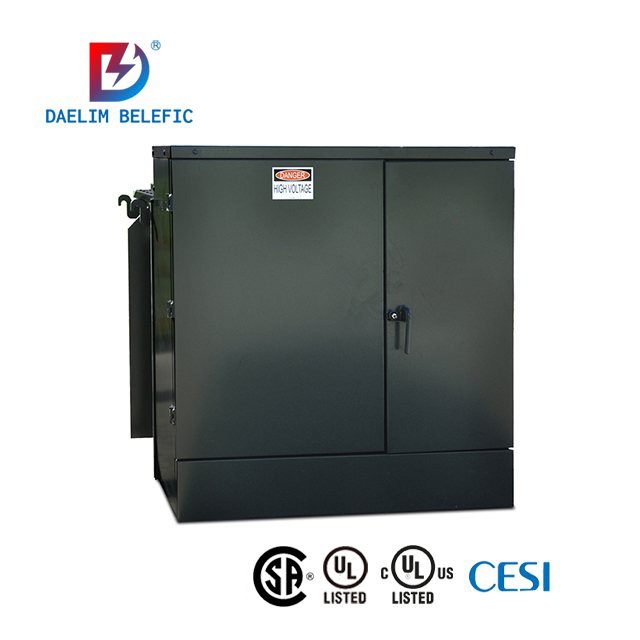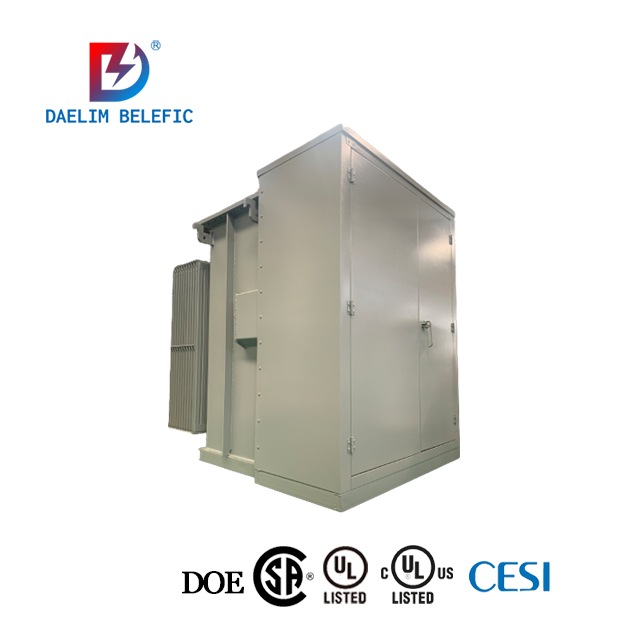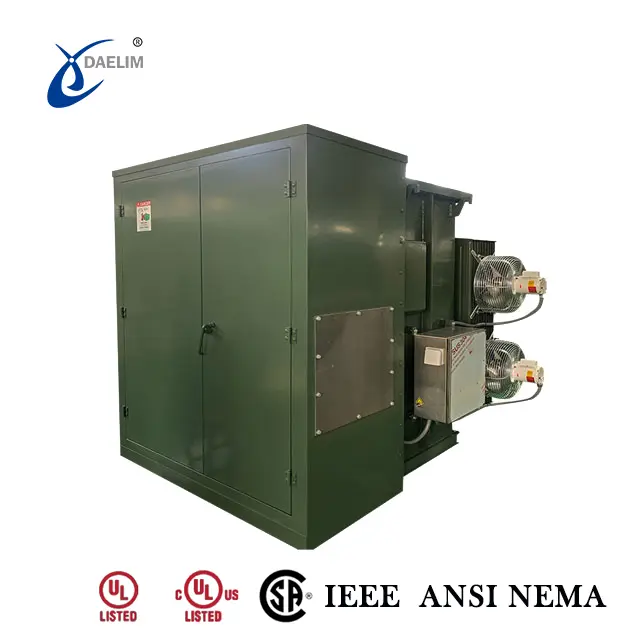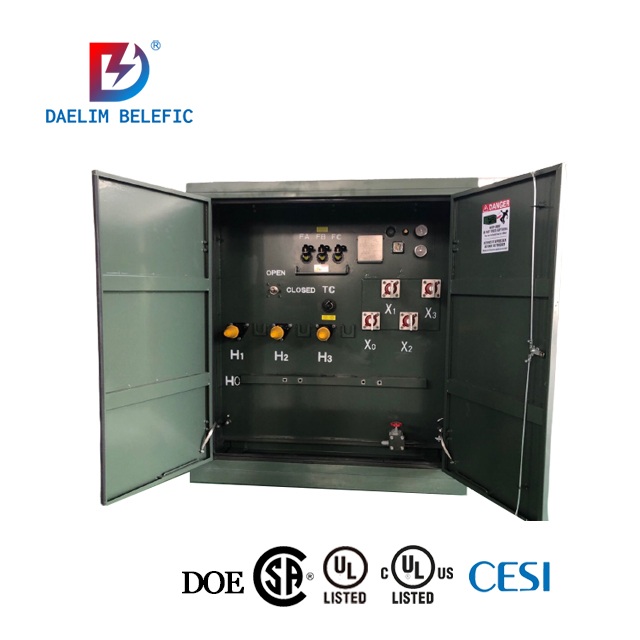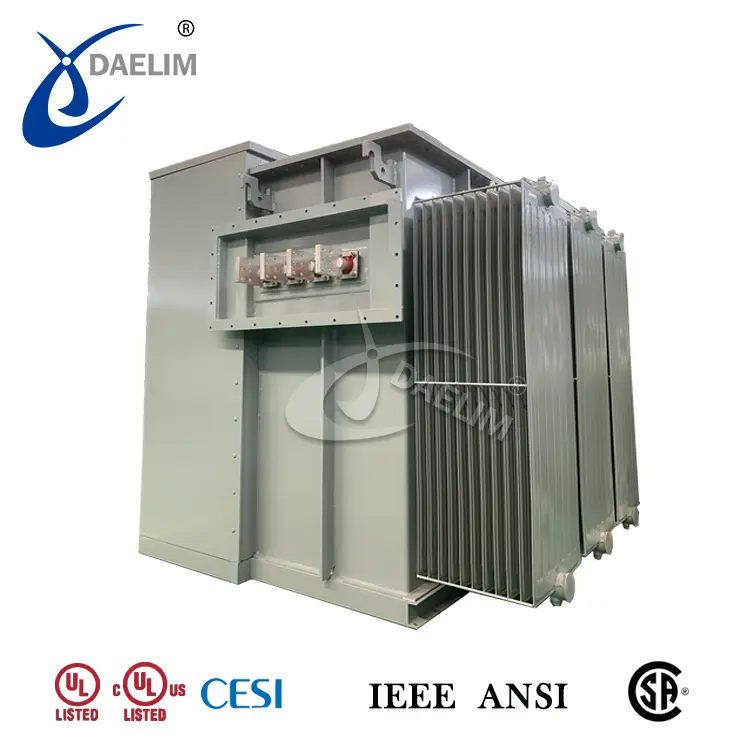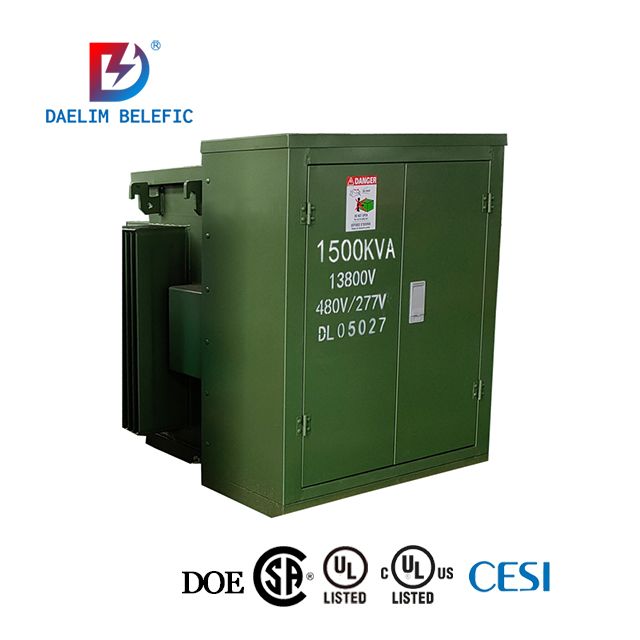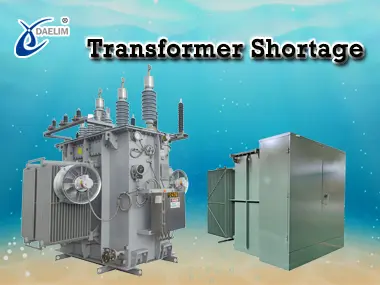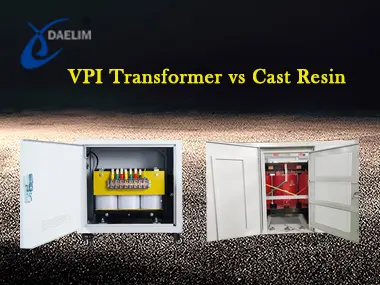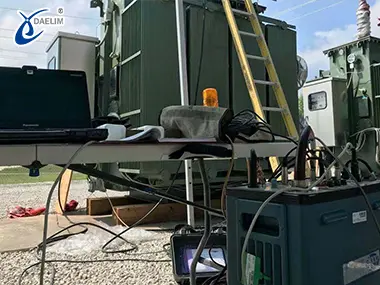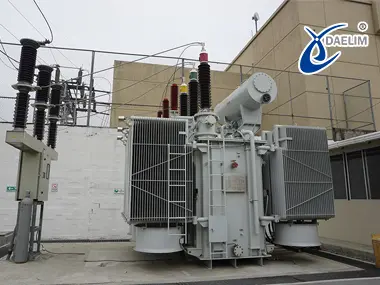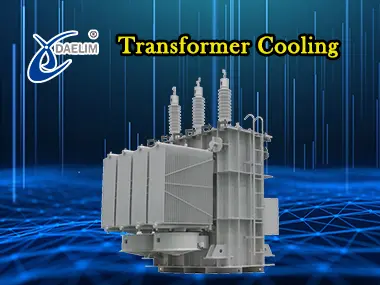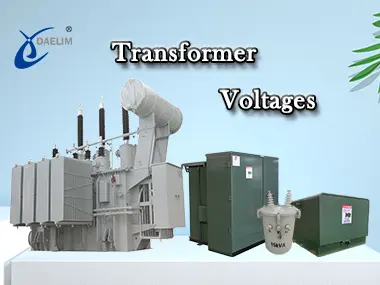Inside the Transformer: Exploring the Internal Structure
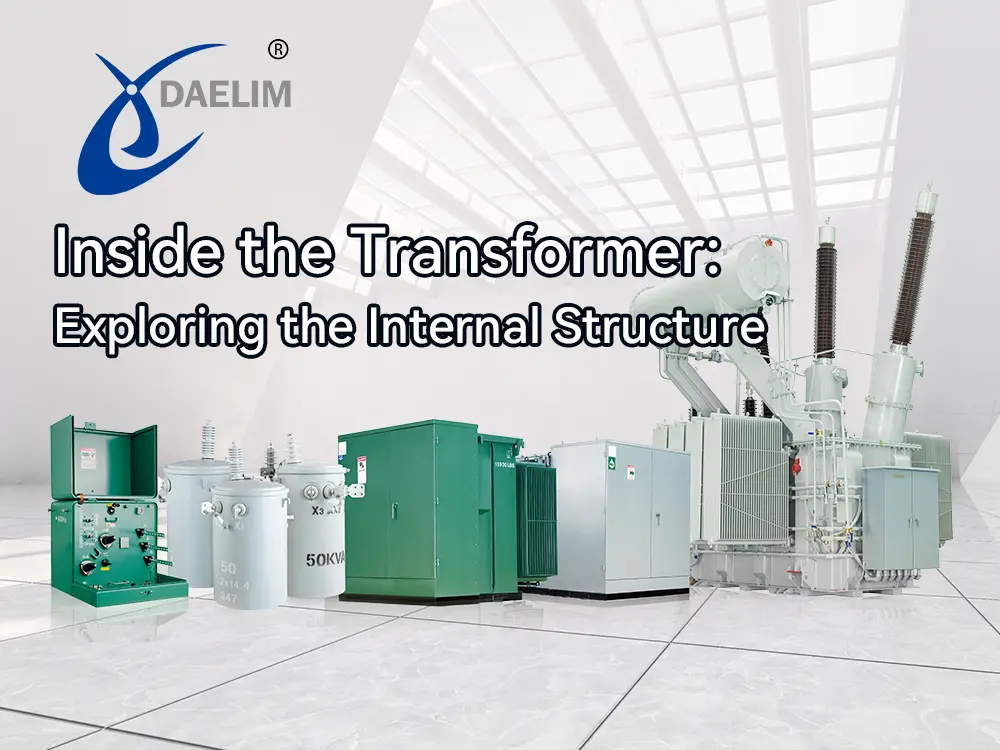
The electrical transformers you see might look simple, but each of their parts is very carefully designed. Each of their parts was designed after solving several complex mathematical formulas to do a calculated regulation of electricity for you.
If electric transformers are designed with that complexity, then what is inside a transformer? What does each part of the transformer look like, and what happens inside the transformer?
We have designed this article especially for those who want to have an understanding of what is inside the transformer. So, read this fully and see how much you gain on the topic.
Contact Daelim TransformerWhat is inside a transformer
There are three main parts inside your transformer that perform all major tasks. Out of the three, two are the crucial parts that work together to perform electricity regulation work for you. The third part is what supports the working of the three parts together. The three transformer parts that work inside a transformer are:
Transformer Core
When you see inside the transformer, you will see a metallic structure made of thin laminated sheets right at the center of the transformer. It's the transformer core. The core is mostly covered with transformer winding, but you can see a considerable section of the core when you look inside a transformer.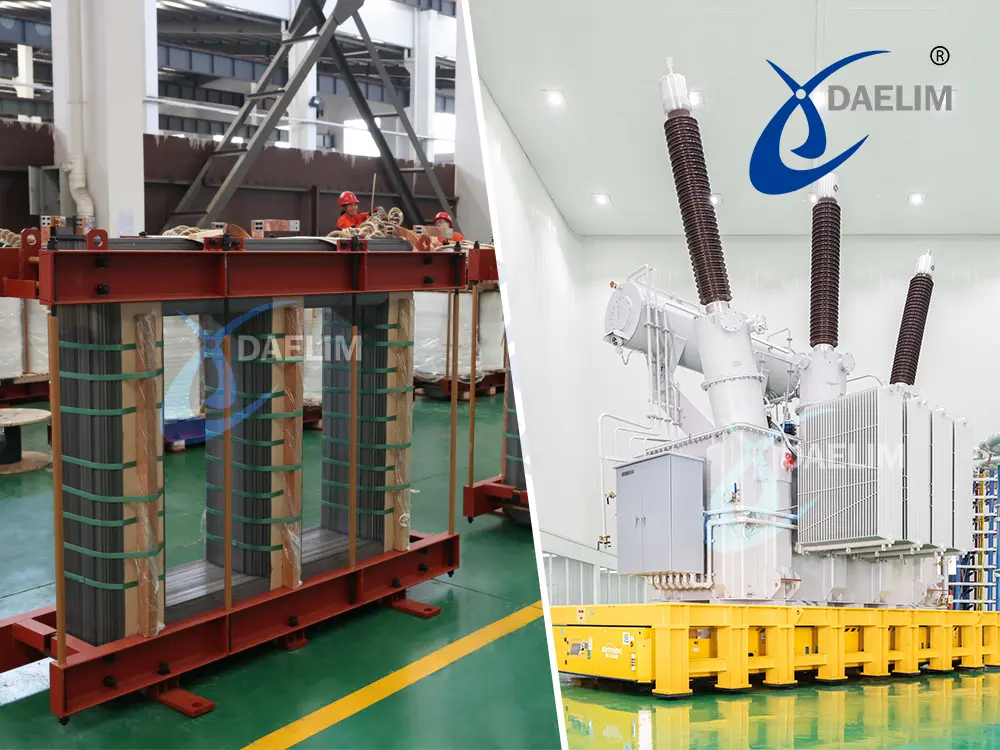
What you will see is a transformer of either a core type transformer core, where you see a big hollow rectangular part. The hollow rectangular core will have a primary transformer winding on one end and a secondary transformer winding on its opposite end. You will be able to see the top section of the core only, as the winding covers the entire left and right sides of the core.
If the transformer you are looking at has a shell type transformer core, then you will see a big rectangular part with two hollow rectangular sections inside it. One hollow section will have a primary transformer winding, and the other section will have a secondary transformer winding. You will be able to see a big part of the transformer core and a little part of the winding, as most of the winding will be inside the core's hollow section.
If you take any type of transformer core and try to take it apart, you will see that the transformer core is made of several laminated, cold rolled sheets of steel bundled together into one piece. The top and bottom sections of the core are called the yoke, and they are the parts you see when you look inside the transformer. The left and right sides of the core are called limbs, and this is where the winding is done.
Transformer Windings
When you see inside a transformer, the most obvious thing you see is the transformer winding. This is because it's the biggest and most prominent part of the transformer. What you see is a copper or aluminum wire wound around a metallic part called a transformer core.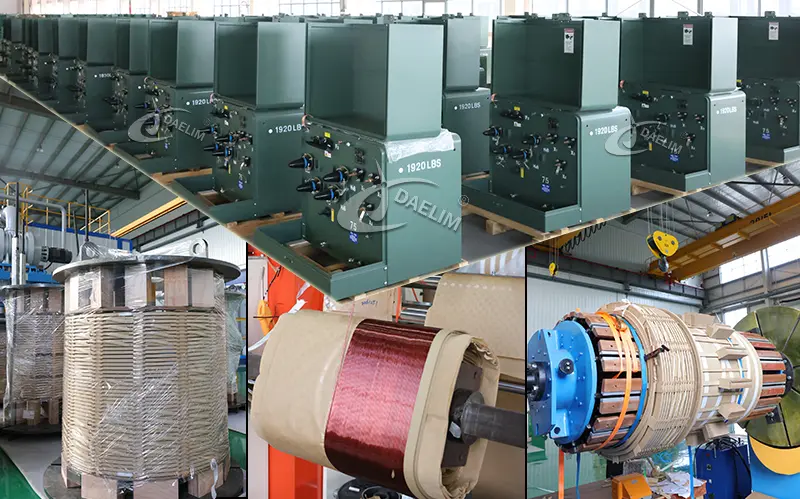
There will be two transformer windings in any given transformer: the primary transformer winding and the secondary transformer winding. You can guess which one is the primary transformer winding and which one is the secondary transformer winding.
If you are looking at a step up transformer, then the secondary transformer winding will be bigger, bulkier, and heavier than the primary transformer winding. Opposite to this, if you are looking at a step down transformer, then the primary winding will be bigger, bulkier, and heavier than the secondary transformer winding.
Depending on the type of transformer core, you might see a concentric transformer winding for a core type transformer core, or you might see a sandwich transformer winding done on a shell type transformer core. You might also observe seven different types of transformer winding styles done on any type of transformer core.
Your transformer might have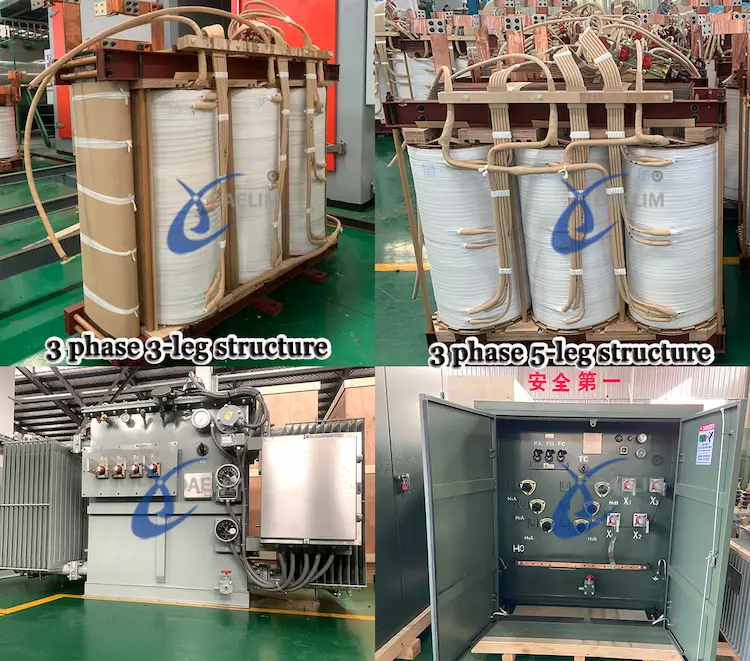
- Cylindrical Type Transformer Windings
- Disc Type Transformer Windings
- Foil Type Transformer Windings
- Helical Windings or Spiral Type Transformer Winding
- Multi Layer Helical Type Transformer Windings
- Disc & Continuous Disc Type Transformer Winding
- Crossover Type Transformer Windings
If the transformer has cylindrical type transformer winding, then you might see rectangular cross section strips of aluminum wound around the core in a manner that they make a cylindrical appearance around the transformer core. Copper can also be found used in the form of wires. The wire is wound around the transformer core with insulation material covering the entire winding.
In foil type transformer winding, you will see very thin insulation covered strips of copper or aluminum wound around the core. You might see a single sheet wound multiple times or a single sheet wound fewer times. The disc type transformer winding is done by winding a copper wire to form a disc shape, then stacking several discs to make a complete winding. Discs are separated using spacers, and each disc has its own insulation.
Helical or spiral type transformer winding consists of several cylindrical windings that are wound around the transformer core and are connected with each other in a manner that forms a helix or spiral. Similarly, the multilayer helical type transformer winding is made with multiple layers of cylindrical windings. They have at least one inner layer and one outer layer of conductive material wound around the transformer core.
Variations in Internal Structure Based on Transformer Types
Oil Type Transformers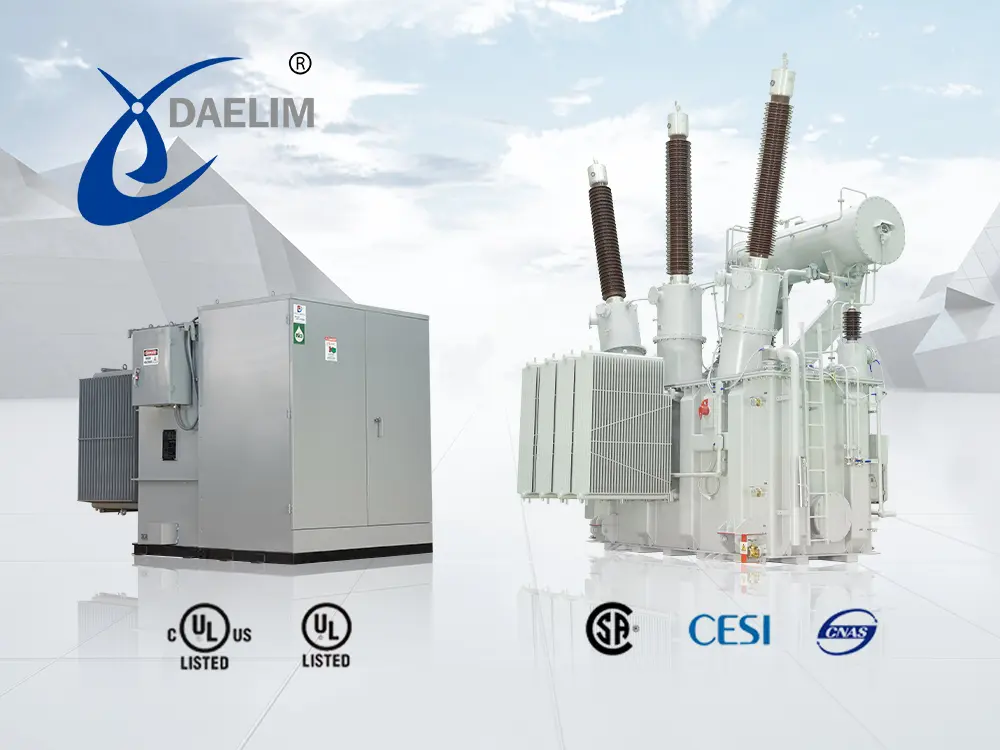
If you're looking inside an oil type transformer, then the first thing you will see is a fluid present inside the tank of the transformer. If you think about it, what is the liquid inside a transformer then, In oil type transformers, the core, winding, and insulation are all kept dipped in oil that works as an insulating and heat transferring medium.
The transformer core, winding, and insulation are placed inside the transformer tank, and then that tank is filled with transformer oil. The tank is filled up to the top, and you will not see the winding and core directly. You will be able to observe the transformer core and winding after removing the oil.
The oil in the transformer also aids in cooling, and depending on the transformer type, the type of cooling system can change. There are five different cooling systems that you can see inside oil type transformers:
- Oil Natural Air Natural
- Oil Natural Air Forced
- Oil Forced Air Natural
- Oil Forced Air Forced
- Oil Forced Water Forced
In oil natural air natural cooling systems, you will not see any dedicated system to remove waste heat. All waste heat is removed using natural convection heat transfer methods. In an oil natural air forced system, you will see an electric cooling fan that forces air onto the fins of the transformer. This increases the cooling rate of the transformer.
In the oil forced air natural system, you will see an electric oil pump inside the transformer. This pump forces the oil to circulate inside a transformer and increase the heat removal rate.
In the oil forced air forced system, you will observe both a cooling fan for air and an oil pump for the oil. Both work to increase the transformer cooling rate. In some high power transformer, you will see the oil forced mechanism combined with a specially designed heat exchanger in which water is used to cool the hot oil coming from the transformer winding.
Dry Type Transformers
You might wonder what does the inside of a transformer look like in a dry transformer. If you look inside the dry type transformer, you will not see the transformer winding, core, and the insulation material. It is due to the reason dry type transformers the transformer winding, transformer core, and insulation material are first dipped in resin and then cured which hardens the resin. This converts the resin into an insulating shell around them.
You might or might not see a cooling fan inside a dry type transformer. Cooling fan work to keep the transformer cool during operation. The fan is responsible for blowing cool outside air onto the resin covered transformer winding. This is done to remove the waste heat produced during the electricity regulating process.
In small dry type transformers you will not see any cooling fan. These transformers cool the winding through the process of natural convection.
Read more:Dry Transformer: The Ultimate FAQs Guide - Daelim
What is Inside a Power Transformers
Power transformers are big and heavy. These transformers are designed and developed for electricity generating power plants. So If you are looking inside a power transformer you will see large transformer windings dipped inside hundreds of liters of oil.
As most of the power transformers are step up type transformers. You will observe that their primary winding is always smaller than their secondary winding. The type of winding you will observe depends on the power rating, voltage rating and capacity of the transformer.
If you look inside a power transformer with a power rating between 150 kVA and 30 MVA. You might see a helical style transformer winding. These transformers have voltage ratings between 400 and 11 kV but sometimes they are used for up to 33 kV of voltage. To support voltage ratings above 11 kV typically from 33 kV to about 110 kV a multilayer helical winding is used in power transformers.
As all power transformers are designed to handle high electrical power in power generating plants. They also produce a lot of waste heat. This waste heat needs to be removed from the transformers as efficiently as possible.
So if you see inside a power transformer you might find a completely dedicated heat disposal mechanism. The mechanism might be using oil forced air forced or oil forced water forced transformer cooling systems.
Distribution Transformers
Distribution transformers are small when compared to power transformers. You can see distribution transformers all around you. These are installed on poles and on small platforms constructed on the ground. If you see inside these transformers you might see different parts based on the type, size and capacity of the distribution transformer.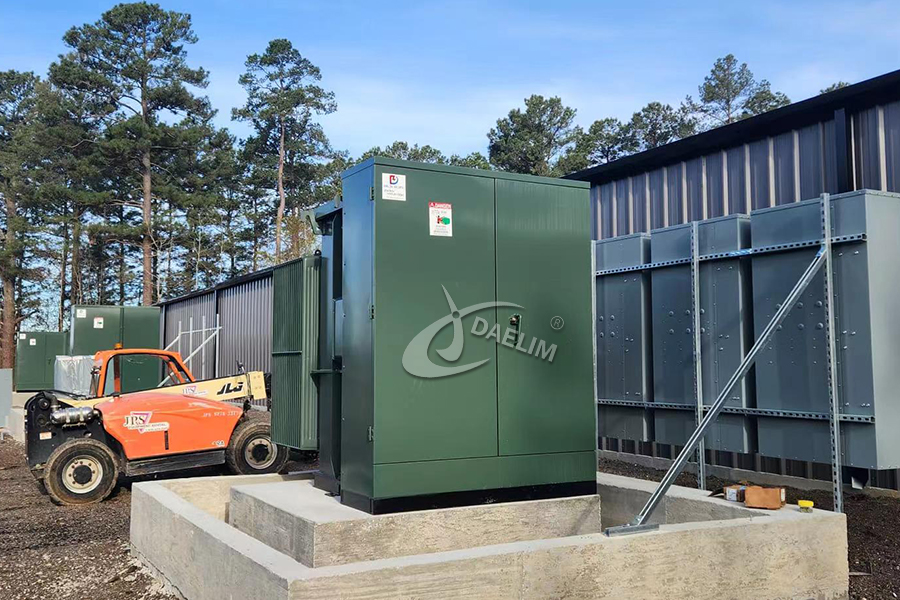
If you are looking inside a transformer that is usually small and installed on poles. You might wonder what is inside a transformer on a telephone pole. There are very high chances that you will see a disc type transformer winding dipped inside the oil.
These small transformers can also be dry type transformers where you might see the winding enclosed in resin. You will not see any dedicated cooling mechanism as these transformers only use natural convection mechanisms for cooling purposes.
If you are looking inside a transformer that is a medium sized distribution transformer. Then you will again see a transformer winding dipped inside oil with or without a forced cooling mechanism. These medium sized transformers can also use dry type transformers with a dedicated cooling mechanism.
If you are looking inside a transformer that is a large sized distribution transformer, then you will see a big transformer winding dipped inside hundreds of liters of oil with a dedicated forced cooling mechanism.
Conclusion
Each component of the transformer from its core to the windings and cooling mechanisms is specifically designed to ensure optimal performance. All parts work together to regulate and deliver electricity efficiently. The parts you will see inside the transformer depends a lot on the transformer type, size, capacity and power rating. . By exploring the internal workings of transformers you can gain a deeper understanding of these devices.
Follow Up
Transformers are really simple looking electrical equipment but what inside the transformer makes them interesting and complex. Inside a transformer there is a core, winding, insulation and cooling mechanism. All parts must be manufactured to the highest standards for high efficiency.
At Daelim we follow all national and internal standards of transformer manufacturing and safety including but not limited to ANSI, IEEE, CSA, AS, GOST, IEC, EU, and DIN/VDE. We have fully functional distribution and facility centers and a strong customer base in the USA, Europe, Canada, Australia, and all others around the globe.
If you have any query about transformers winding, just Contact Us and we will talk you through the process.
Related Products
Related Article
Transformer Shortage: Factors and Challenges of Current World Order
The global shortage of electrical transformers is driven by increased demand due to lifestyle shifts, population growth, and industrial expansion, particularly in electric vehicles, cryptocurrency mining, and AI data centers. National policies, supply chain disruptions, raw material shortages, and manufacturing constraints further exacerbate the issue. Daelim offers industry-focused solutions, leveraging multiple production facilities to meet demand and provide high-quality transformers in record time.
VPI Transformer vs Cast Resin
VPI and Cast Resin transformers are both dry-type transformers with distinct characteristics. VPI transformers use vacuum pressure to impregnate resin for enhanced insulation and moisture resistance, making them ideal for moderate environments and industrial applications. Cast Resin transformers, with solid epoxy resin construction, offer superior durability and fire resistance, suited for harsh environments like marine and mining. VPI transformers are cost-effective, while Cast Resin models have higher upfront costs but longer-term reliability.
How To Check Transformer Primary And Secondary?
Transformers are essential for regulating electricity in homes and industries. Proper inspection of transformer windings—primary and secondary—is crucial for ensuring safety and performance. Tools like multimeters and insulation testers help detect issues such as open circuits, short circuits, and insulation breakdowns. Regular maintenance prevents catastrophic failures, enhances safety, and extends transformer life, ensuring reliable operation across global installations.
How Long Does It Take To Replace A Transformer
Replacing a transformer involves several steps, including inspection, equipment transportation, removal of the old transformer, and installation of the new one. Smaller transformers can be replaced in a few hours, while larger industrial or utility transformers may take days or even weeks. Factors such as transformer type, site conditions, weather, and availability of parts can influence replacement time. Proper planning ensures efficiency.
What is Transformer Cooling and How is it done?
Transformer cooling is essential for managing waste heat generated during electricity regulation. There are several cooling methods, including natural air, forced air, oil-based systems, and combinations of oil and water cooling. The choice of method depends on transformer type, capacity, environmental conditions, and budget. Effective cooling ensures transformer safety, performance, and reliability. Daelim offers high-quality cooling systems for various transformer specifications globally.
The Ultimate Guide to Transformer Voltages
Transformers are essential for regulating voltage in power systems, ensuring safe and efficient electricity distribution. They come in various voltage ranges, including low, medium, high, and extra-high voltage for different applications, from residential use to heavy industrial operations. Understanding transformer voltages—such as 240V, 480V, 600V, and renewable energy-specific voltages like 600V and 800V—is crucial for optimizing performance and preventing equipment damage in sectors like manufacturing and energy.


